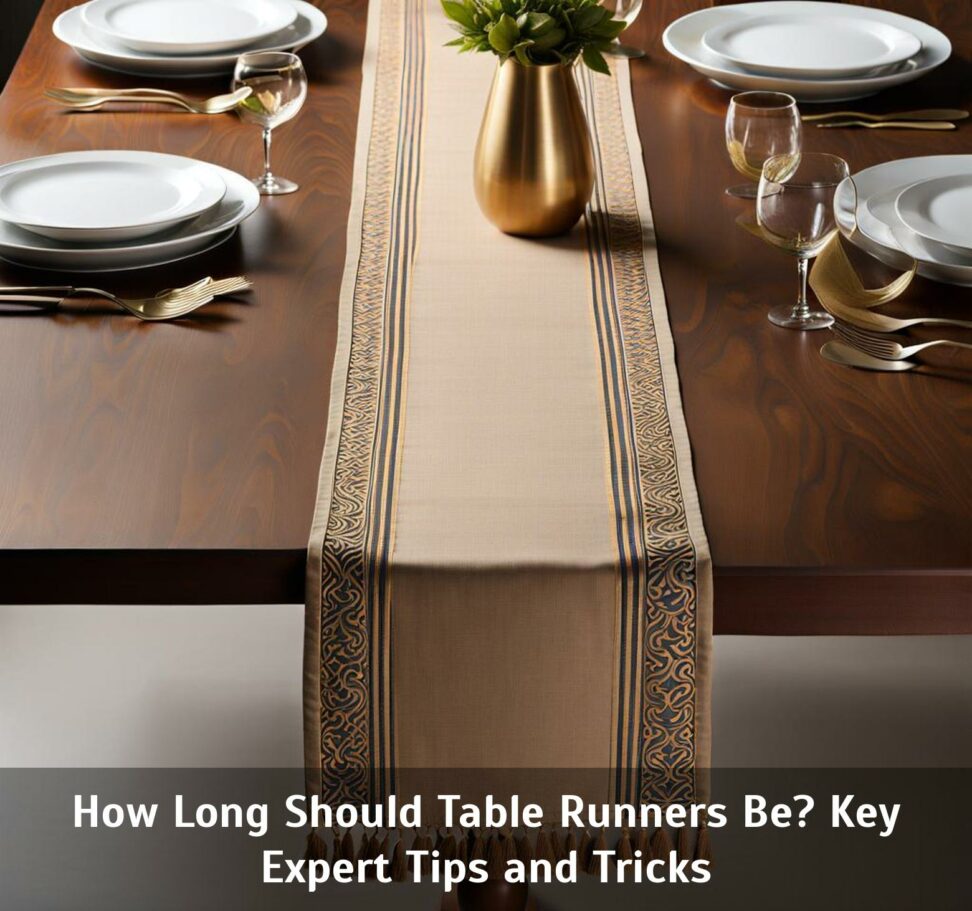How Long Should Table Runners Be? Key Expert Tips and Tricks
Table runners serve both decorative and functional purposes at a dining table. When appropriately sized, these narrow pieces of fabric can elevate any tablescape with a stylish focal point that pulls together your aesthetic. However, an improperly sized table runner can end up looking unbalanced or awkward. Implement these expert size recommendations for achieving table runner perfection.
We'll be covering standard sizing guidelines based on factors like table shape and occasion. You'll also get key overhang requirements, measurement tricks, and customization tips to help select a runner tailored to your space.

What is the Standard Table Runner Size?
For most rectangular dining tables measuring approximately 60 inches long, the most common table runner size is 72 inches (or 6 feet).
A 72 inch table runner fits 60 inch tables with ample overhang, typically providing 6 to 12 inches of fabric draped over each end. This is considered the standard size because it accommodates place settings nicely while making the table feel polished and complete.
Minimum Recommended Table Runner Length
While 72 inches may be viewed as the traditional length, table runners should always meet the minimum recommendation of extending at least 12 inches past the length of the actual dining table on both ends.
A size compliance of 12 inches prevents the edge of the runner from bluntly hitting the table's border. It provides sufficient fabric to cascade over the sides gracefully. Even a small overhang goes a long way in giving a cohesive, upscale look.
Recommended Width Coverage
In terms of width, accepted styling standards dictate that table runners should span around one-third of the total tabletop width. This generally strikes the right balance without overly concealing the table itself.
To calculate the ideal width, simply measure across the table at its widest point and divide that number by three. A 36 inch wide table would suit a 12 inch wide runner, for example, while a 48 inch table could accommodate a 16 inch runner.
Importance of Overhang
We've established that runners should indeed overhang the table's edges, but why does this extra draping matter? Visually, overhang prevents the blunt edges of your table from peering out in what feels like an incomplete presentation.
Most experts suggest allowing at least a 6 inch overhang minimum on both ends. This small amount of cascading fabric helps soften table corners for a polished finished look.
Tips for Measuring Runner Size
When calculating your ideal runner size, consider the shape of your table in addition to its length and width.
For round tables, subtract about 12 inches from the full diameter measurement. Oval shapes can use the table's widest point for width calculations and should be 6 inches shorter than that number for length.
Also account for the height of the table legs and the size of the table base. Larger leg profiles like pedestals often call for longer runners that fully cloak the table edges and legs beneath them.
Matching Table Runner Size to Occasion
The formality of the event you're hosting should play a role in runner size selection. Elaborately set tables for special events like weddings or formal dinner parties demand the drama of extra long runners in luxe fabrics like velvet or brocade.
For casual gatherings with friends and family or everyday place setting, shorter runners around 60 inches work nicely and still deliver refined style.
Other Table Factors That Affect Runner Size
Consider the visual weight of your table itself when balancing an appropriately sized runner. Items like bold glass tabletops or those with intricate tile patterns or carvings can handle shorter runners so they don't compete. Conversely, simple and lightweight wood tables provide the ideal blank canvas for longer runners to shine.
Getting Help With Size Selection
If you need additional guidance selecting a properly sized table runner, many online specialty linen or tableware stores include dimension guidelines and recommendations with their products.
Interior designers can also advise on ideal runner proportions to achieve your desired aesthetic. For a truly custom solution made precisely for your table, order bespoke table runners tailored to your exact measurements.
Size Recommendations By Table Shape
| Table Shape | Table Runner Sizing Tips |
|---|---|
| Rectangular | Length should exceed table by 12 inches minimum; span 1/3 table width |
| Round | Runner length should be around 12 inches shorter than total table diameter |
| Oval | Runner length should be 6 inches shorter than widest table measurement |
Runners that are sized appropriately for your table deliver visual continuity that finishes off any design with elegance. From standard 72 inch runners for 60 inch tables to wide rectangles for banquet halls, follow our pro size guidelines to maximize style impact.
And remember, when in doubt, go bigger. A runner can be too small, but too large simply means extra cascading fabric and opulent elegance.